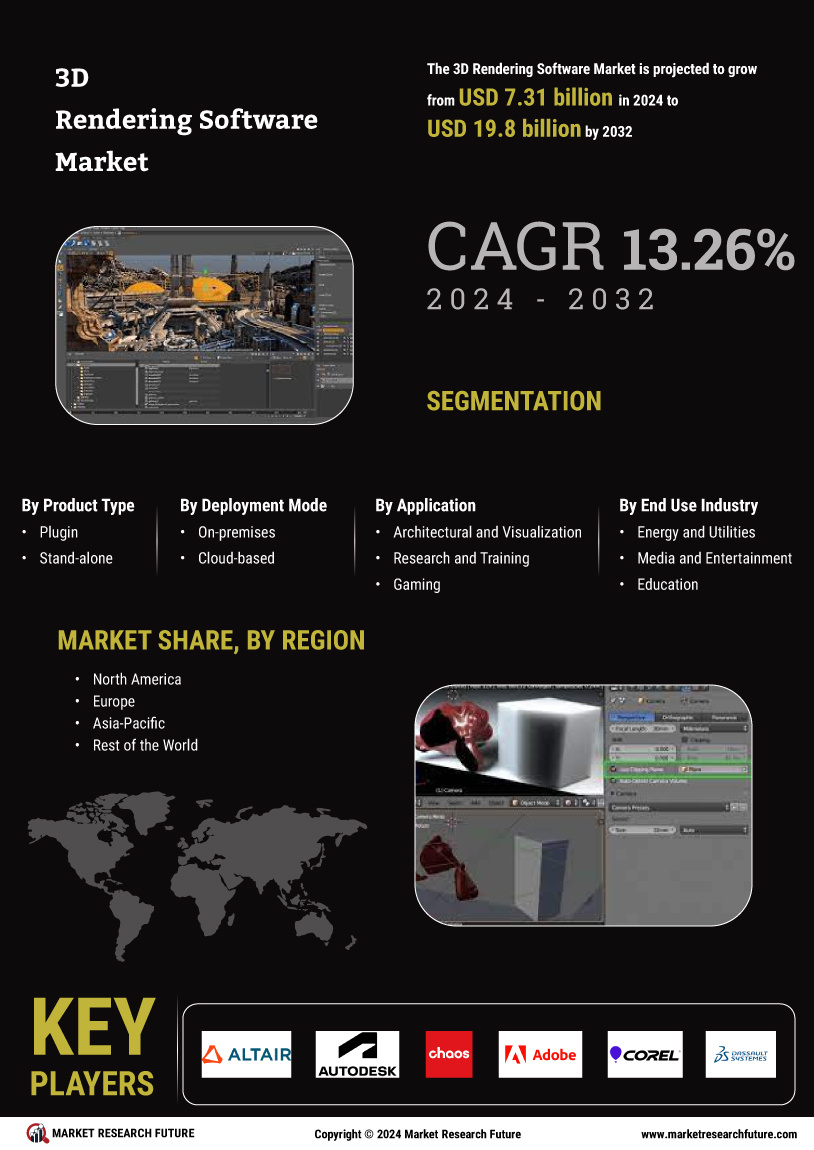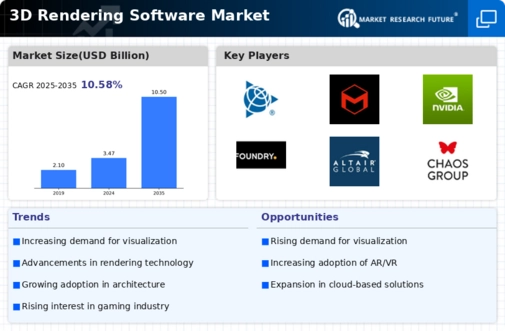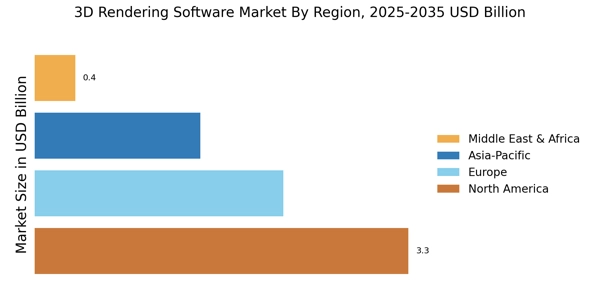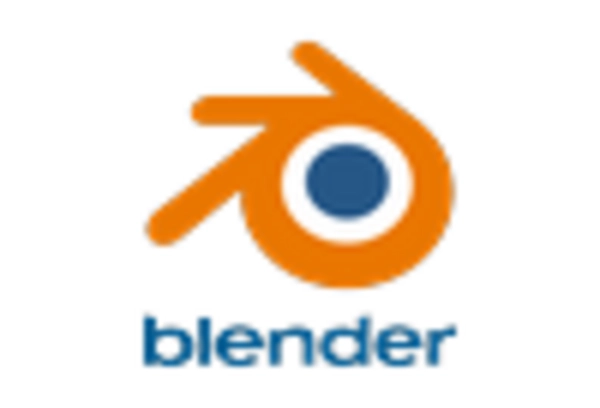Advancements in Technology
Technological advancements in hardware and software are likely to play a crucial role in the growth of the 3D Rendering Software Market. The introduction of powerful graphics processing units (GPUs) and enhanced rendering algorithms has enabled faster and more efficient rendering processes. This evolution allows artists and designers to produce high-quality images in shorter timeframes, which is essential in competitive industries. Furthermore, the integration of real-time rendering capabilities is transforming workflows, particularly in gaming and virtual reality applications. As a result, the market is witnessing a shift towards more sophisticated rendering solutions that can handle complex scenes and high-resolution outputs, thus attracting a broader range of users.
Rising Demand for Visual Content
The increasing demand for high-quality visual content across various industries appears to be a primary driver for the 3D Rendering Software Market. As businesses strive to enhance their marketing strategies, the need for visually appealing graphics and animations has surged. Industries such as architecture, gaming, and film are particularly reliant on 3D rendering to create immersive experiences. According to recent data, the architectural visualization segment is projected to grow significantly, with a compound annual growth rate (CAGR) of over 20% in the coming years. This trend indicates that companies are investing heavily in 3D rendering technologies to meet consumer expectations for engaging and realistic visuals, thereby propelling the market forward.
Surge in E-commerce and Online Retail
The rapid expansion of e-commerce and online retail is driving demand for 3D rendering solutions within the 3D Rendering Software Market. As online shopping becomes increasingly prevalent, retailers are seeking innovative ways to showcase their products. 3D rendering allows for the creation of interactive product visualizations, enabling customers to view items from multiple angles and in various settings. This capability enhances the online shopping experience, potentially leading to higher conversion rates. Recent statistics indicate that e-commerce sales are expected to reach trillions of dollars in the next few years, underscoring the importance of high-quality visual content in attracting and retaining customers. Consequently, the market for 3D rendering software is likely to benefit from this trend.
Increased Adoption in Education and Training
The adoption of 3D rendering software in educational institutions and training programs is emerging as a significant driver for the 3D Rendering Software Market. Educational sectors are increasingly utilizing 3D visualization tools to enhance learning experiences, particularly in fields such as engineering, medicine, and design. By providing students with interactive and immersive environments, these tools facilitate better understanding and retention of complex concepts. Moreover, training simulations in industries like aviation and healthcare are leveraging 3D rendering to create realistic scenarios for skill development. This trend suggests a growing recognition of the value of 3D rendering in education, which could lead to sustained market growth as institutions invest in advanced software solutions.
Growing Interest in Virtual and Augmented Reality
The burgeoning interest in virtual reality (VR) and augmented reality (AR) applications is significantly influencing the 3D Rendering Software Market. As industries explore the potential of VR and AR for various applications, the demand for sophisticated rendering software is on the rise. These technologies require high-quality 3D models and environments to create immersive experiences, which in turn drives the need for advanced rendering solutions. The gaming industry, in particular, is witnessing a surge in VR content, while sectors such as real estate and tourism are also adopting AR to enhance customer engagement. This trend indicates a promising future for the 3D rendering market, as more businesses recognize the value of immersive technologies.


















Leave a Comment